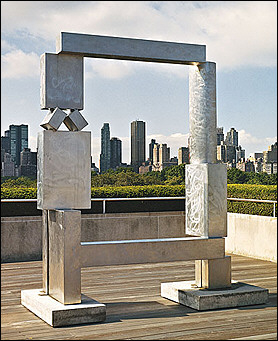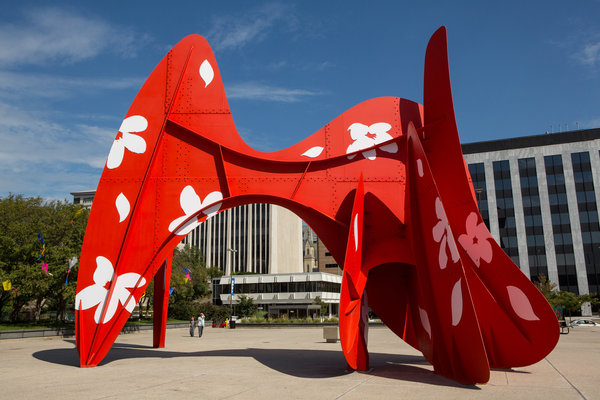A pair of recent disputes over sculpture, fair use and moral rights highlights the ongoing concern that Prince v. Cariou has made things worse, not better. The first concerns the estate of sculptor David Smith, and sculptor Lauren Clay. As Art in America put it, “Clay's works replicate the shapes of Smith's large metal ‘Cubi’ sculptures at tabletop scale in materials such as paper, and with faux wood grain or marble finishes.’ The Smith estate, through its reprsentatives at VAGA, took issue with this as a violation of Smith’s copyright. During the discussion, VAGA apparently proposed an agreement in which Clay would agree either not to sell the works, or only to display them with a disclaimer that the works were not authorized.
David Smith:
Lauren Clay:
Word came this week that the parties had settled the brewing dispute, and that Clay will be able to exhibit and sell, without restriction, the seven works that she made. Not mentioned by Art In America, but clarified by Donn Zaretsky (who negotiated the agreement for the Donald Smith estate) is that Clay agreed not to make any more works based on Smith’s without permission.
Over in Grand Rapids, Michigan (another ancestral home of the Art Law Report), the fair use debate was further entangled by the Visual Artists Rights Act (VARA). As Sergio Muñoz Sarmiento describes it, “Michigan artist, David Dodde, previously recast Alexander Calder’s large steel sculpture, La Grande Vitesse, with a garden theme as part of ArtPrize” for reasons described as “whimsy.” Dodde attached magnetic flowers to the original forms.
The Alexander Calder Foundation likewise objected, and the city of Grand Rapids and the artist agreed to remove the flowers. That seems to be the end of it, but even if the Calder team had disavowed the work under VARA (meaning it could no longer be attributed to him), could derivative works of the disclaimed work be accussed of infringing the original work?
Even if so, in a post-Prince world these could well both be found to be fair use. Clay “transformed” the scale and in some respects the medium like Prince did; Dodde “transformed” the appearance from the severe lines of Calder to something out of Yellow Submarine the way that Prince mocks the reverential tones of Canal Zone with guitars and pornography. If Prince puts no onus on the artist to proffer the new critical meaning, don’t both survive infringement claims?
I agree with Sarmiento that the Clay seems more derivative than transformative. If I sold a ¼ scale Andy Warhol poster that was originally a silkscreen, I would hardly expect to get away with it. Personally I see some room for added meaning in the Dodde works owing primarily to the starkly different visual impact on a city plaza that the original and derivative work would have, but echoing Judge Wallace from the Second Circuit, isn’t that already playing a dangerous aesthetic game (and I’m not a federal judge quite yet)?






